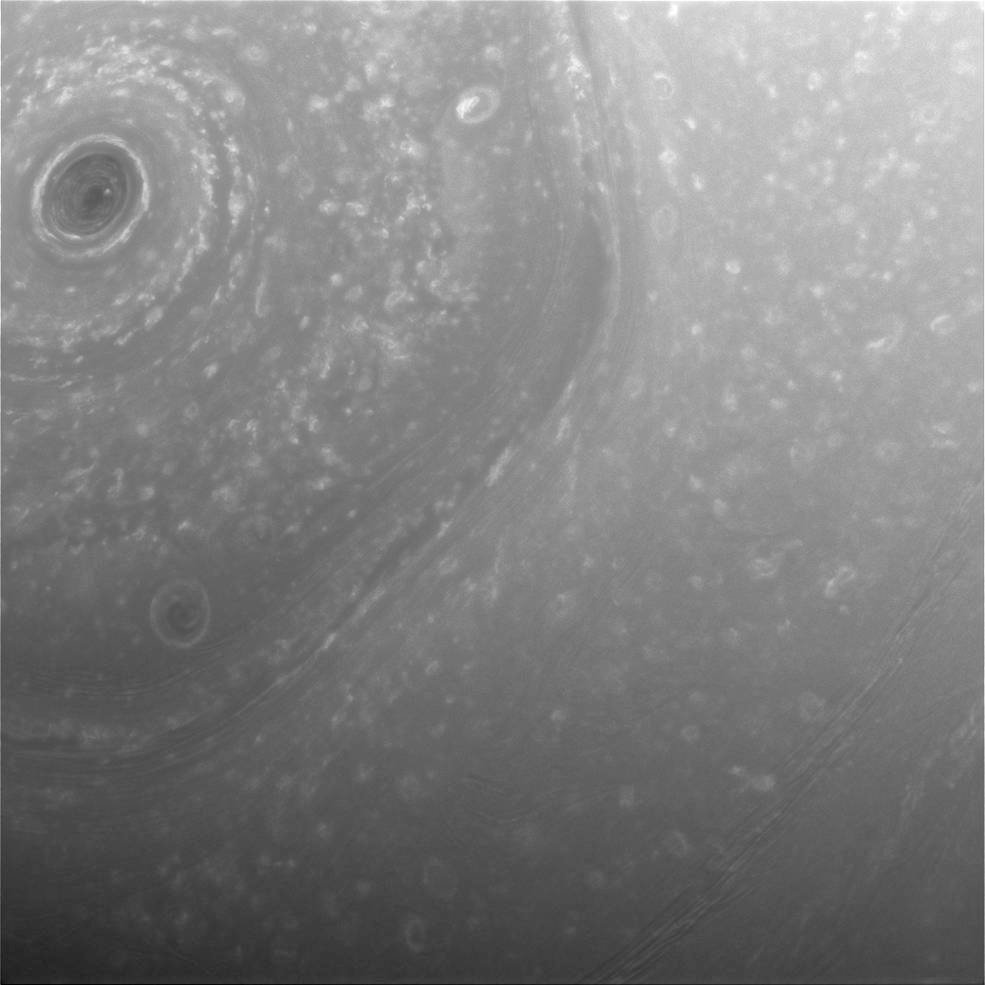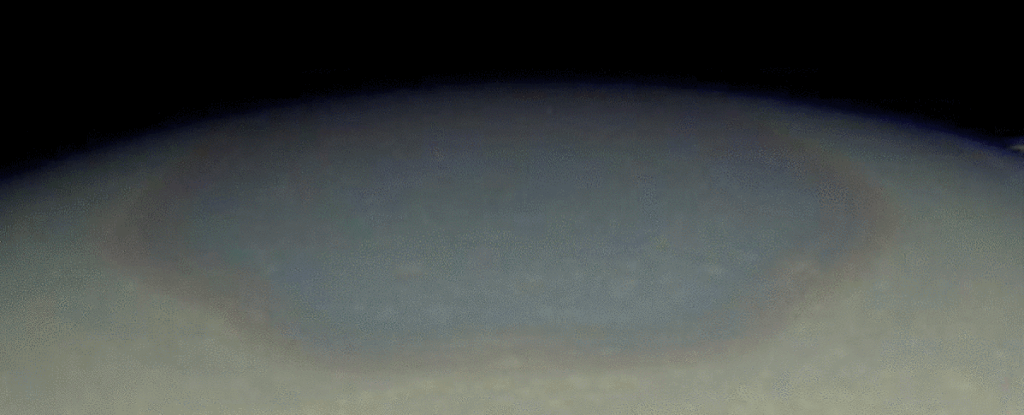
Hurricane from close range. Photo obtained by wide-angle camera, "Cassini" on December 3rd of this year.
Cassini probe began the final part of their mission - photographing Saturn's rings as it passes through them. From 30 November this year to 22 April of the following year the unit will move from pole to pole of this planet. Every seven days, he now passes through the outer region of the main rings of the gas giant. It is planned to make about 20 of these "shuttle" transitions.
The probe is equipped with a large number of scientific instruments, which are not just helping scientists to obtain new information about the various objects in the solar system. They help them now. Recently, the probe sent images of Saturn's atmosphere Earth, showing the area near the northern hemisphere. The photographs clearly visible hexagonal storm in the planet's atmosphere, the duration of which is several hundred years old.
Photos obtained on 2-4 December, two days before "diving" into the ring. All of the following images will show the new area of the planet and its rings in high definition. Some photos will be taken at the maximum close range ever recorded.
"This is it, the beginning of the end of our historic exploration of Saturn. Let these images -- and those to come -- remind you that we’ve lived a bold and daring adventure around the solar system’s most magnificent planet," said Carolyn Porco, Cassini imaging team lead at Space Science Institute, Boulder, Colorado.
The following passage on the outer edge of one of the rings is scheduled for December 11.
Let me remind you that the first two "dive" Cassini makes through one of the thinnest and weakest of Saturn's rings formed by tiny meteors striking the planet's two moons - Janus and Epimetheus. In March and April, the probe will explore the outer regions of the ring F, characterized by large amounts of dust.
"Despite the fact that we are closer to the F ring is closer than ever, it is still more than 7800 kilometers. There is practically no dust threat, "- said Earl Mays, the Cassini project manager at NASA's Jet Propulsion Laboratory.

These few photos were obtained "Cassini" December 2, 2016 ". This shows, and a hurricane, and rings. Each photo was taken using a filter sensitive to wavelengths of light. Visible and clouds and haze at different altitudes
During his tenure, "Cassini" sent to Earth more than 30 thousands of photos of both the Saturn and its rings and moons. Thanks to the work of the probe, scientists have a wealth of information about the gas giant.
This year, scientists have learned that Saturn's storm changes its color with the passage of time. Approximately four years of observations he had changed from blue to golden. Why? So far, experts can only speculate. Most likely, the reason - seasonal changes. A year on Saturn lasts 29 Earth years. Change of seasons occurs every seven years. And now, the gas giant gets maximum sunlight, because it was "winter" before that of Saturn.
"Change the color, perhaps a consequence of the change of the seasons on Saturn. In particular, the transition from bluish color to gold can be explained by the passage of photochemical reactions in the atmosphere ", - said in a NASA statement. It is interesting that in 2017 it will be possible to observe Saturnian solstice.

Another photo below, was obtained on 4 December this year. In this picture you can see Tethys, one-fifth the size of Saturn's moon with a very uneven surface. The largest crater Tethys is about 400 km in diameter.

Unfortunately, in September this year, Cassini will begin to carry out the final phase of the mission - immersion in the dense atmosphere of Saturn. In early September, the probe will pass at a distance of 1600 kilometers from the cloud tops. After that, he will fall into the depths of the atmosphere, that will happen on 15 September. Scientists hope that the final will be beneficial for science - the device can transmit a large amount of valuable scientific information on the composition of the atmosphere of the gas giant.
Referenced Materials:
- https://www.nasa.gov/feature/jpl/cassini-beams-back-first-images-from-new-orbit
- http://www.sciencealert.com/this-weird-hexagon-on-saturn-has-puzzled-scientists-for-decades
- https://en.wikipedia.org/wiki/Jet_Propulsion_Laboratory
- http://photojournal.jpl.nasa.gov/catalog/PIA21049
- /@redalex/cassini-is-preparing-for-its-final-mission-journey-to-saturn-s-rings-fatal-immersion-in-the-atmosphere-of-the-planet
